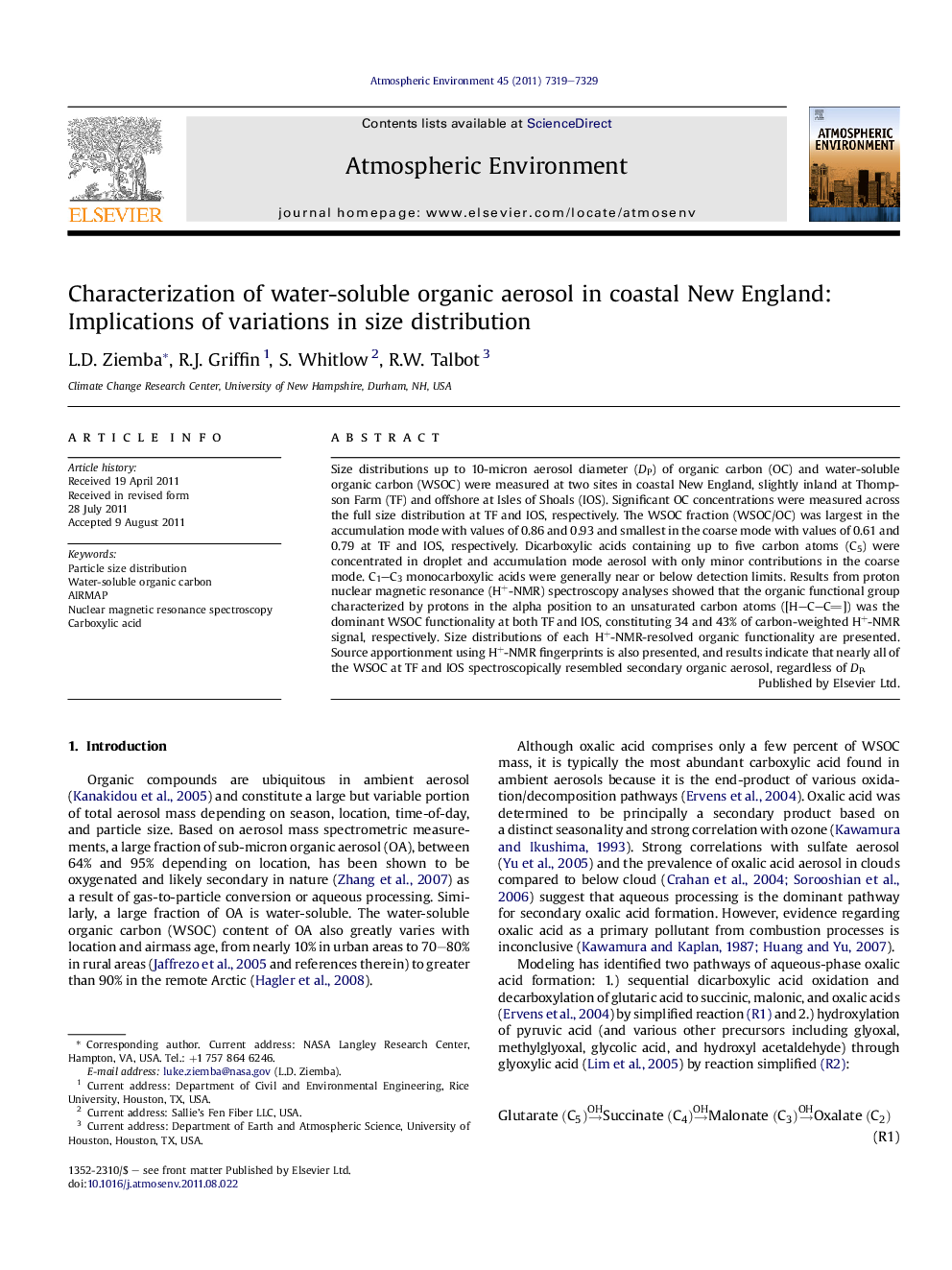| Article ID | Journal | Published Year | Pages | File Type |
|---|---|---|---|---|
| 4439170 | Atmospheric Environment | 2011 | 11 Pages |
Size distributions up to 10-micron aerosol diameter (DP) of organic carbon (OC) and water-soluble organic carbon (WSOC) were measured at two sites in coastal New England, slightly inland at Thompson Farm (TF) and offshore at Isles of Shoals (IOS). Significant OC concentrations were measured across the full size distribution at TF and IOS, respectively. The WSOC fraction (WSOC/OC) was largest in the accumulation mode with values of 0.86 and 0.93 and smallest in the coarse mode with values of 0.61 and 0.79 at TF and IOS, respectively. Dicarboxylic acids containing up to five carbon atoms (C5) were concentrated in droplet and accumulation mode aerosol with only minor contributions in the coarse mode. C1–C3 monocarboxylic acids were generally near or below detection limits. Results from proton nuclear magnetic resonance (H+-NMR) spectroscopy analyses showed that the organic functional group characterized by protons in the alpha position to an unsaturated carbon atoms ([H–C–C]) was the dominant WSOC functionality at both TF and IOS, constituting 34 and 43% of carbon-weighted H+-NMR signal, respectively. Size distributions of each H+-NMR-resolved organic functionality are presented. Source apportionment using H+-NMR fingerprints is also presented, and results indicate that nearly all of the WSOC at TF and IOS spectroscopically resembled secondary organic aerosol, regardless of DP.
► Aerosol size distributions were measured at two sites in coastal New England. ► Organic aerosol was highly water-soluble at both sites, even in the coarse mode. ► Dicarboxylic acids were concentrated in droplet and accumulation mode aerosol. ► Size-resolved organic functionality by H+-NMR suggests a dominant secondary source. ► Coarse mode aerosol at the inland site likely had a primary biological source.
